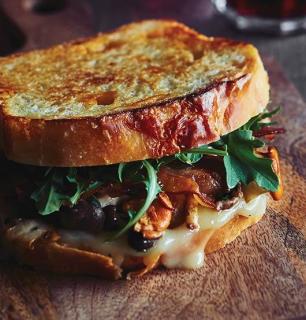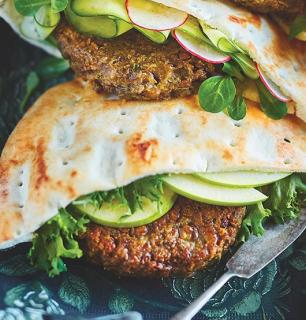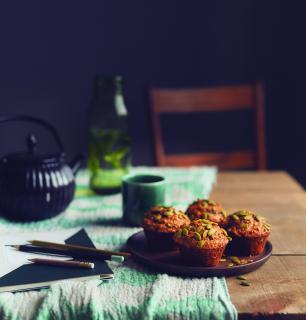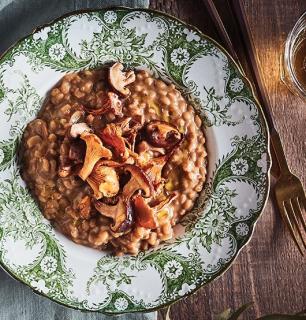Buckwheat, or the “black wheat” of Les belles histoires
“Hold it and don’t speak!” It’s the type of response that Séraphin Poudrier would give to the beautiful Donalda if she dared ask for a little molasses to sweeten her buckwheat pancakes. In the 1950s, all eyes in Quebec were glued to Les belles histoires des pays d’en haut. And if the actor who played the miser was forever stigmatized through his unglamorous role, an unflattering association with grinding poverty also cast an unflattering shadow on buckwheat's reputation. It took practically 50 years for the precious gold lying dormant within these seeds, in these small fairy bundles to be rediscovered – an integral part of our history.
ITS DNA: Buckwheat does not belong to the wheat family, not even to the grain family. Surprisingly, it is the cousin of rhubarb. Unlike the golden and compact cornfields into which Hollywood stars would retreat and kiss for hours on end, a buckwheat field is populated with informal, gorgeous, soft green stems garnished with heart-shaped leaves and charming aromatic white flowers.
ITS VERSATILITY: The crepe and the galette (a thicker, more savoury pancake): unique destiny of the “poor man’s wheat”? Nothing could be further than the truth. As whole grains, buckwheat is cooked like rice, so it is served as a pilaf or sarrasoto (a risotto, without rice). As flakes, it seriously defies oats, but when it is reduced to a powder, it elevates breads, cakes and pastries. It must, however, be combined with other flours, for it is gluten-free. The Italians and the Japanese use buckwheat to make the pasta that we love: pizzoccheri and soba noodles, respectively. In India, its young sprouts and greens are served. When buckwheat is grilled, its flavour intensifies and becomes slightly smoky in taste. The Japanese then infuse it with green tea to produce sobacha, a detoxifying beverage rich in antioxidant properties, to be consumed without moderation. In Russia, the Ukraine and Poland, roasted buckwheat grains have been used in cooking for centuries, both in sweet and savoury dishes. Its subtle hazelnut flavour works well with mushrooms, dried fruits and nuts. In certain Southeast Asian countries, buckwheat is even used to brew a traditional beer. So yes, please, to crepes and pancakes, but don’t stop there!
ITS POWERS: The list of benefits is long. Buckwheat is highly digestible. Loaded with antioxidants and rich in fibre, vitamins and trace elements, it is also bursting with minerals, particularly magnesium, copper and manganese. Buckwheat represents an incredible source of vegetable proteins and therefore essential amino acids to the delight of vegetarians.
ITS CULTURE: The leading buckwheat producers are China and Russia, where its consumption has never faltered. For a long time, in North America, it was the grain consumed the most by the working and peasant classes, but between 1918 and 1964, the number of hectares dedicated to its farming in the United States declined from 400,000 to 20,000. A similar curve was seen north on our side of the border. After decades of decline in favour of more robust, better regulated cultures, like corn and soy, the attraction for buckwheat is enjoying a revival. Gluten intolerance is no stranger to this awakening. Buckwheat has the merit of growing on inhospitable land. It has the ability to aerate the soil and “clean” it of weeds. Quite resistant to diseases, it can easily do without fertilizer and pesticides, which allows the bees to feed on its blossoms without danger and produce a coveted dark, powerful honey. Consumers concerned about their carbon footprint will have no trouble finding a locally cultivated product: the region of Louiseville is renown for its buckwheat. This year, around Thanksgiving, the Buckwheat Pancake Festival will be held for the 40th time.
ITS SUSTAINABILITY: Buckwheat flour is fragile. It keeps for a maximum of two months. Also, it’s best that it be kept in the refrigerator or, even better, in the freezer in an airtight container.
by Donia Demers
Our recipes
See all recipes




